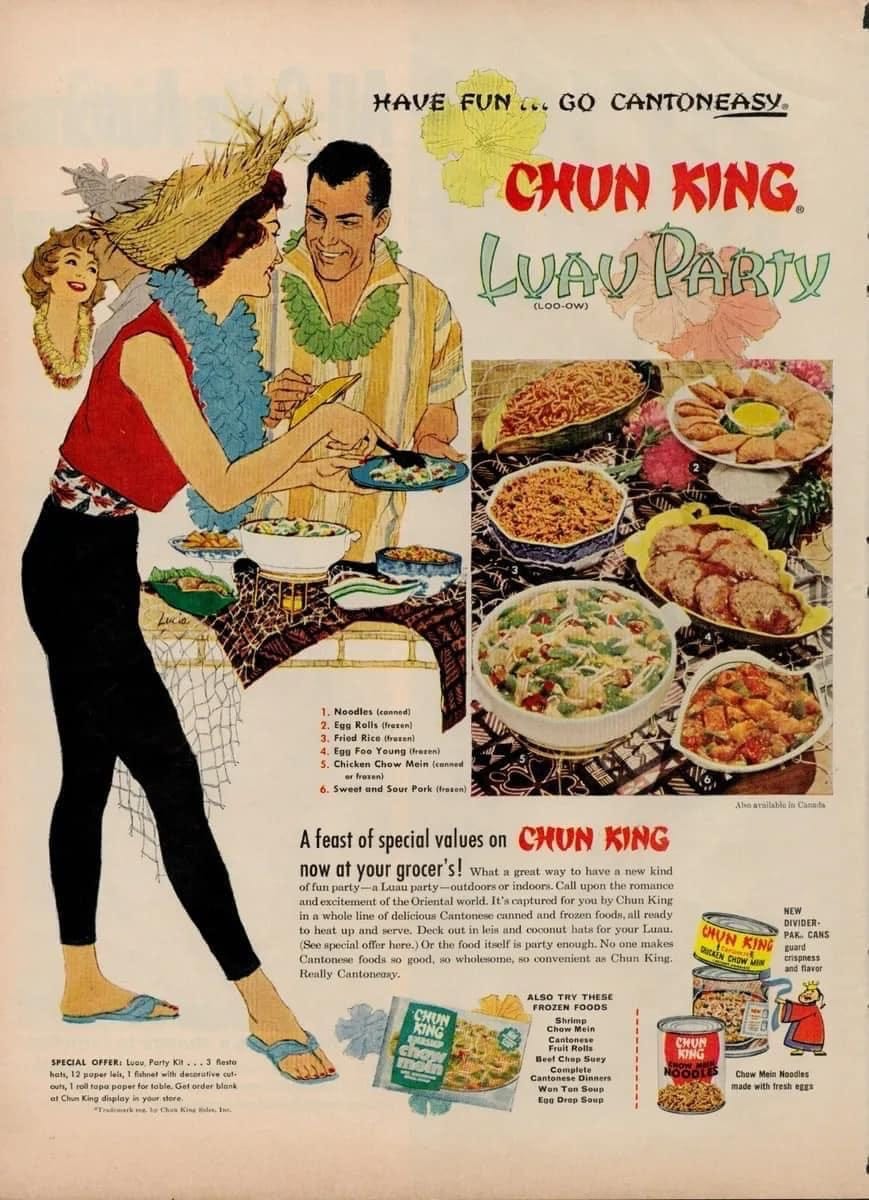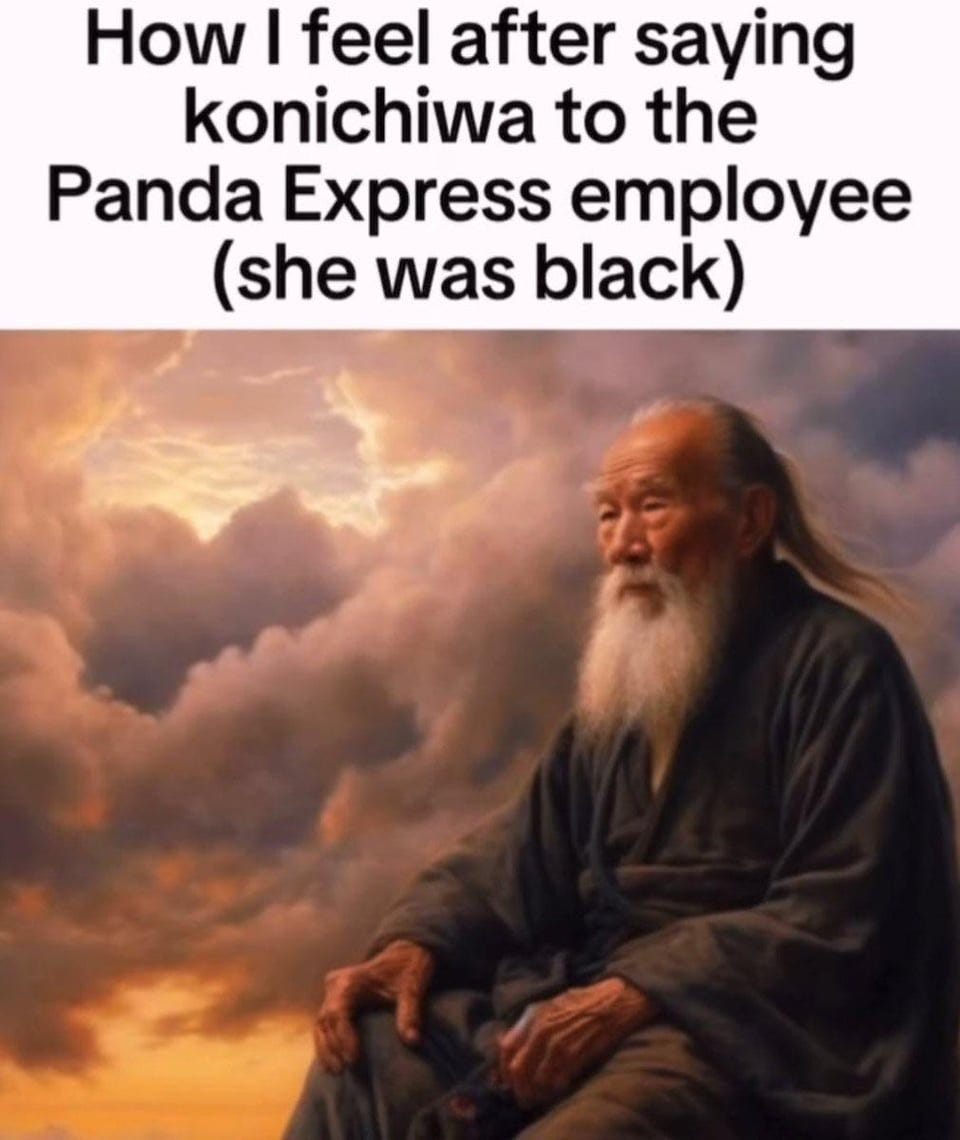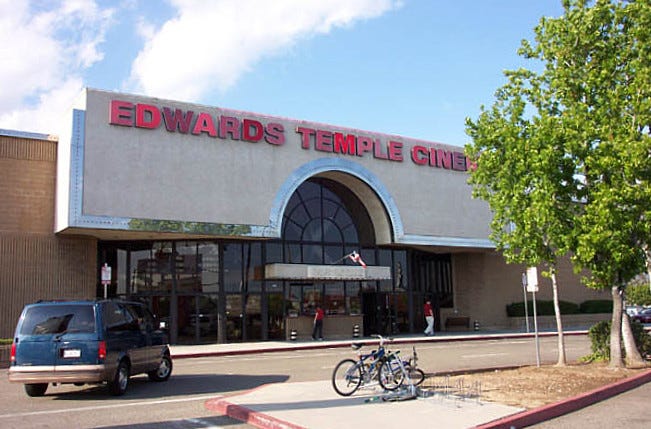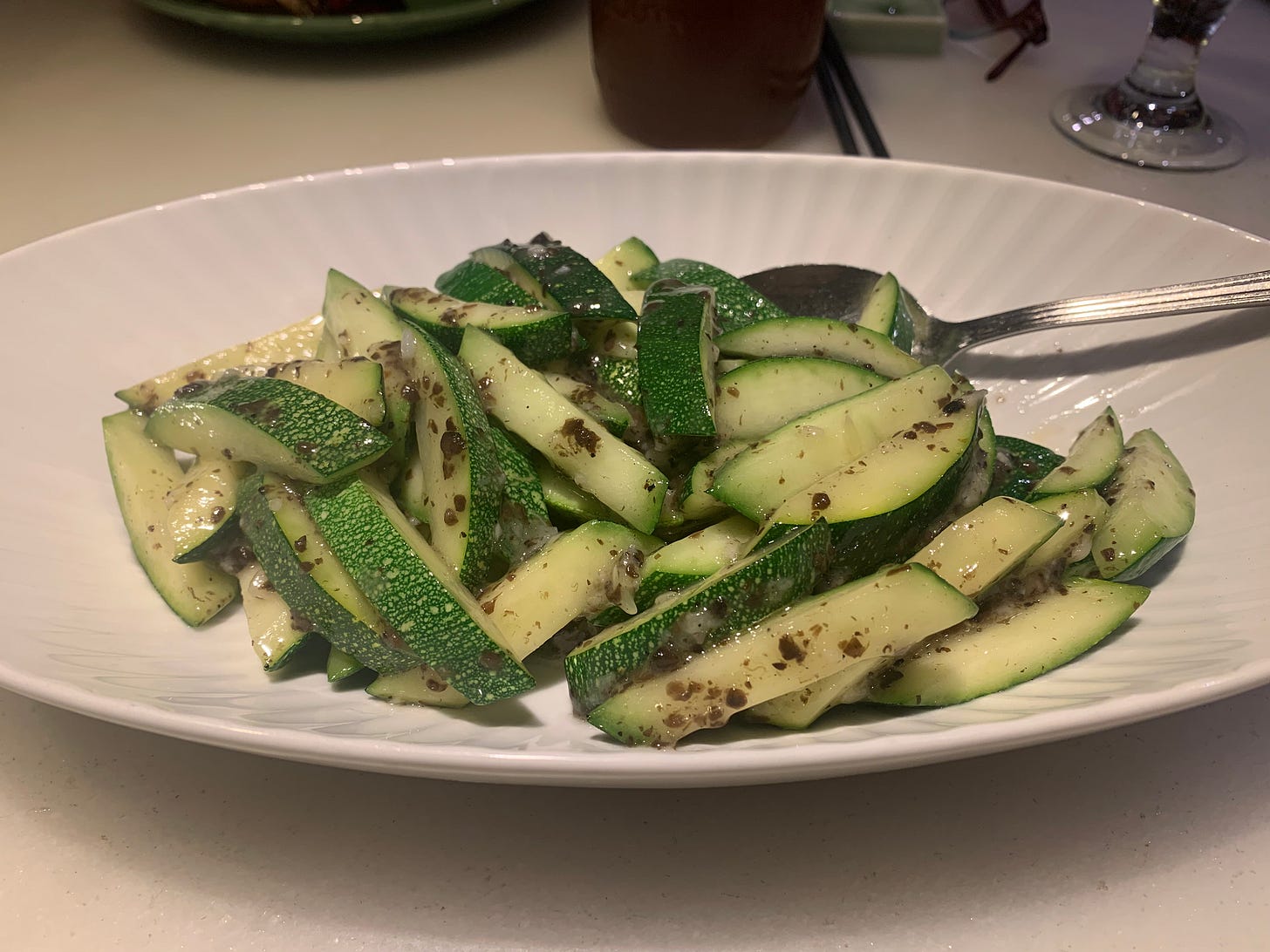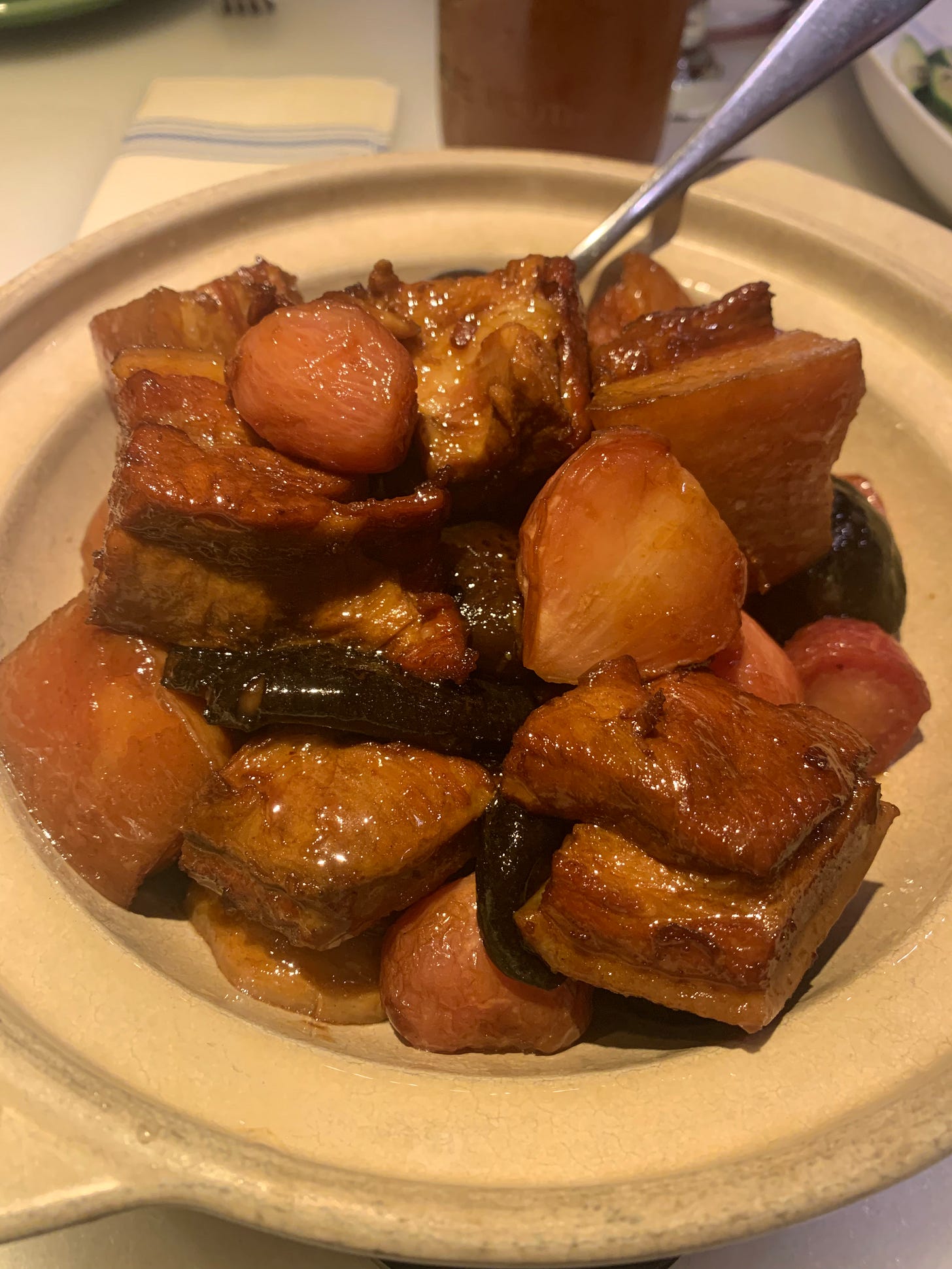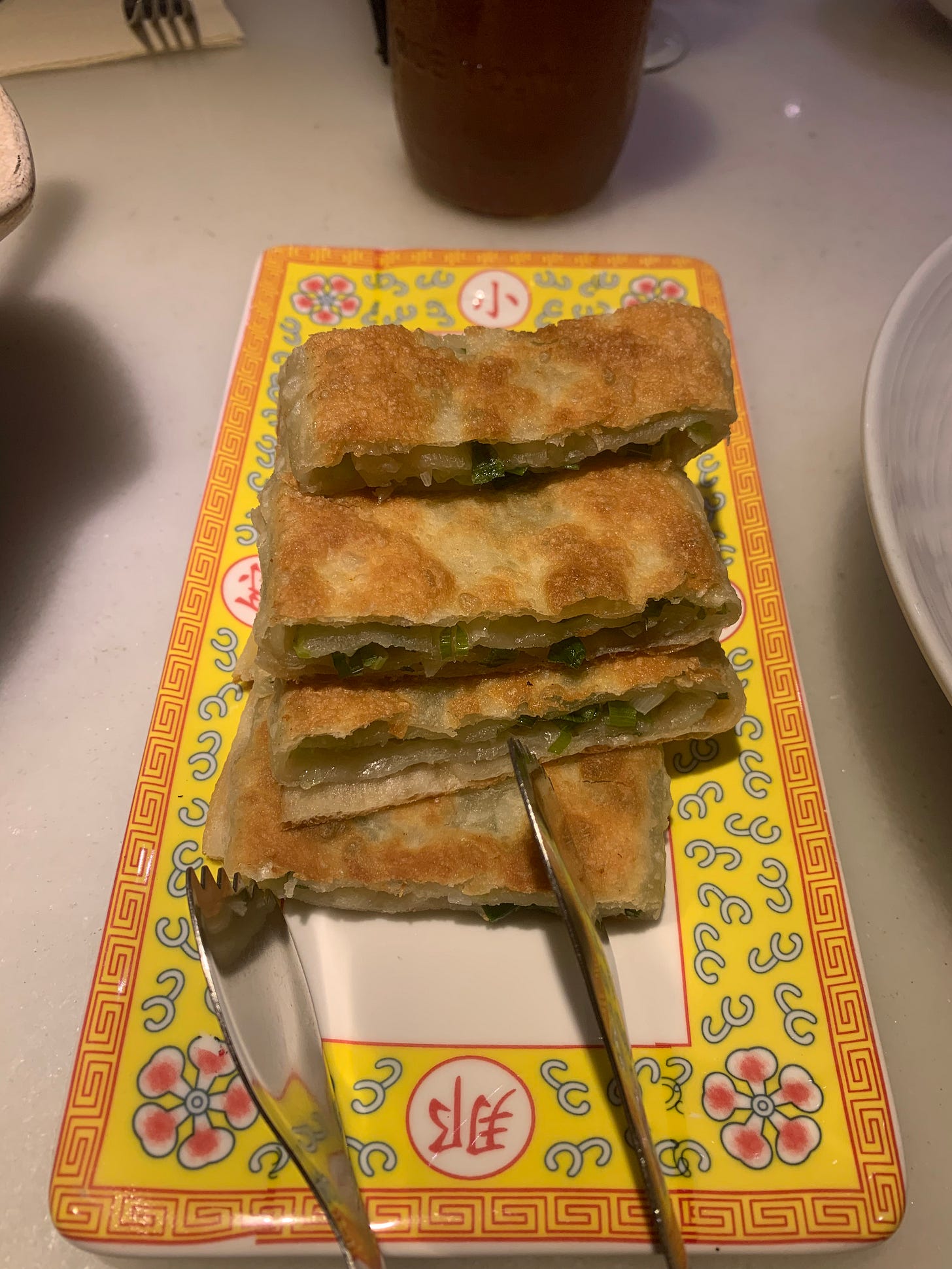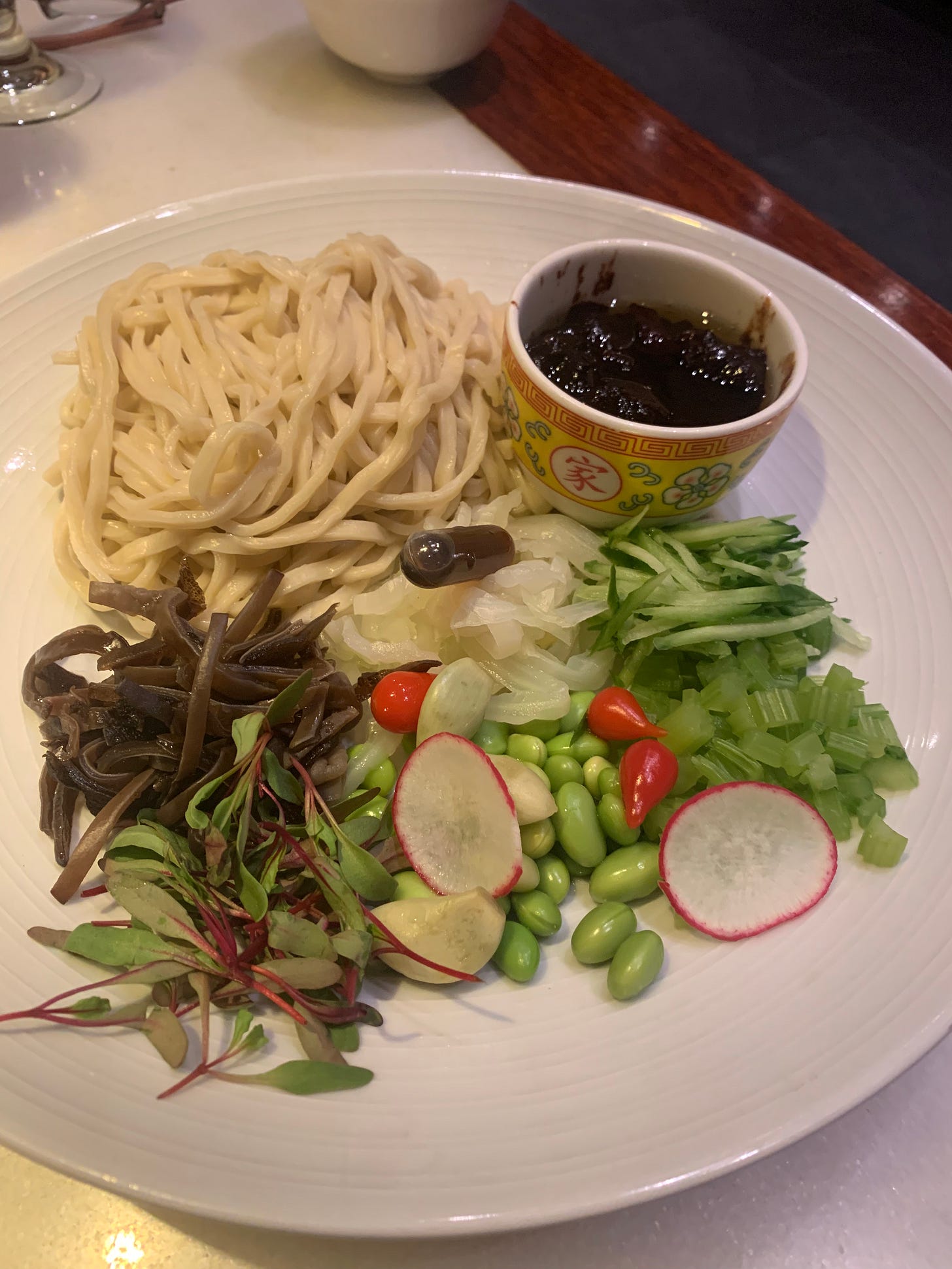Restaurant Review: Bistro Na's
Never would've guessed in a hundred years that the neighborhood I grew up in would one day have a Michelin-starred restaurant
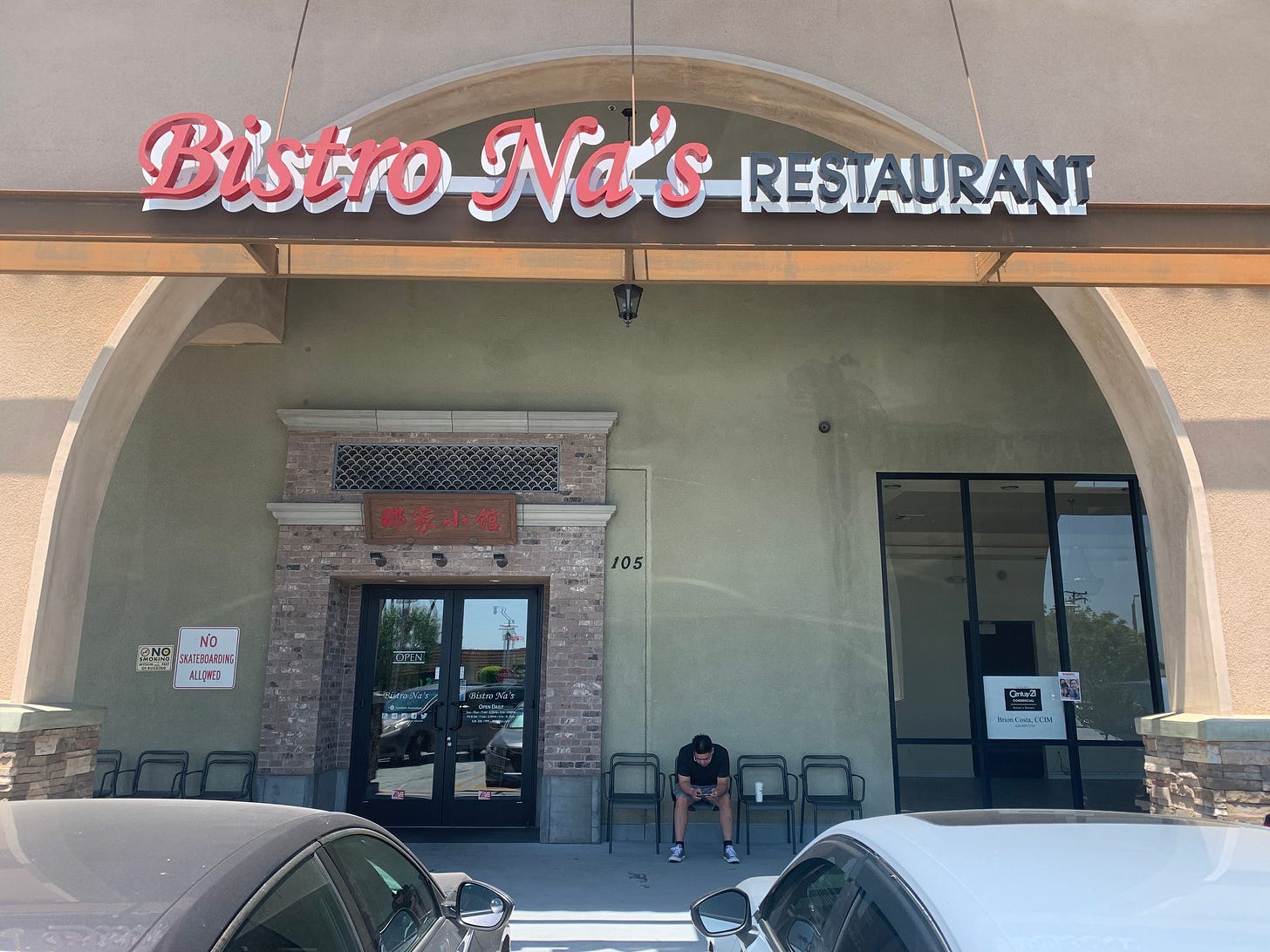
In my last post about the Bahooka, I mentioned how Rosemead Blvd. in the San Gabriel Valley was a key artery for the midcentury tiki craze in SoCal. The L.A. Conservancy writes:
Rosemead Boulevard, from Pasadena to Pico Rivera and beyond, contains an unusually intact assortment of Polynesian Modern properties, though the number is starting to dwindle. Although the best known may be the now-closed Bahooka Family Restaurant, there is a wide assortment of Polynesian-themed apartment complexes with exuberant architectural styles ranging from the dramatic A-frames of the Huntington at Pasadena to the Polynesian Ranch of the Kahlua.
This attribute is also highlighted in the documentary BOSKO AND THE REBIRTH OF TIKI.1
Midcentury tiki restaurants were a fantasy amalgam of basically three things: 1) Polynesian architecture and decoration, 2) rum-based cocktails from the Caribbean, and 3) Americanized Cantonese food.
These elements were haphazardly blended to create a sense of the exotic in L.A.’s suburban sprawl. But as immigration from Asia increased — primarily from China and Vietnam, but also Japan and Korea — Rosemead Blvd. shifted from a corridor of inauthentic island make-believe to the country’s premier destination for authentic Asian food. I first read about this phenom almost 25 years ago in the Atlantic Monthly:
EAST of downtown Los Angeles, just east of East L.A., where the Interstate 10 freeway careens or crawls well beyond the last breath of the ocean toward the Inland Empire, is a series of towns in the San Gabriel Valley. This sprawl looks just like any other tentacle of the southern-California megalopolis except that here the signs for the Rite Aid drugstore, the Walgreen's, the Church of the Latter-Day Saints, and the car wash are in Chinese. Here in the wide-aisled supermarkets, alongside the Fruit Loops and the Oreos, are tanks of live geoduck and carp, pig snouts and ears and feet, and more than twenty varieties of soy sauce.
This is not a traditional Chinatown; Los Angeles has one of those, too, of course, urban and crowded, but in the San Gabriel Valley the sidewalks aren't wet with fish entrails and the unfamiliar produce doesn't spill into the gutters. Beginning with Monterey Park and spreading into Alhambra, San Gabriel, Rosemead, San Marino, South Pasadena, Rowland Heights, Hacienda Heights, West Covina, Walnut, City of Industry, Diamond Bar, Arcadia, and Temple City, the largest concentration of Chinese in the United States lives in middle-class and upper-middle-class suburbia, a twenty-mile swath of unassuming wooden bungalows, 1970s stucco condominiums, and lushly landscaped faux-Spanish developments, shot through with commercial strips and studded with mini-malls. Here is the best Chinese food in America.
Rosemead Blvd. is not only the location of the best Chinese food in America, it’s also the source of the most popular. The original Panda Inn, the basis of Panda Express, is just west of the intersection of Rosemead and Foothill while the Panda Express test kitchen2 is just to the east.
But we’ll save the deep dive into orange chicken for another post.
I wanted to explore this food scene so I started with Bistro Na’s, a restaurant that specializes in Chinese imperial cuisine.

Quick bit of nostalgia given that I grew up a block from here. The restaurant is located in the Camellia Square shopping center, the former location of the Edwards Temple City. This is where I saw THREE AMIGOS, LABYRINTH, GHOSTBUSTERS, and TEMPLE OF DOOM during their original runs. I remember my dad taking me to a double feature of SUPERMAN III and OCTOPUSSY where I fell asleep during the Bond movie.3
What it looks like now. Bistro Na’s is behind the building on the right.
We had a lunch reservation for 1pm on a Saturday. That afternoon we were the only white people there LOL

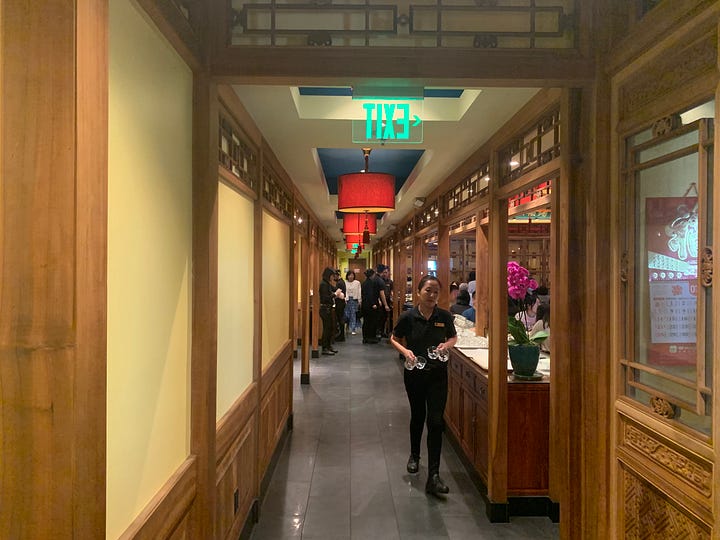
While it attained a Michelin star in 2019 and 2021 (I assume there were no ratings for 2020 because of COVID), it lost the star in 2022.
Because we the only baizuo there, we were segregated in our own booth away from the main dining room.4
The menu, printed on thick cardboard pages, was too tall and bulky to fit in my mom’s purse so I wasn’t able to persuade her to steal one to add to my collection.


The restaurant serves small plates instead of entrees so I ordered fives dishes that we all shared. They were brought out one at a time in fairly quick succession. The first we got was the Crispy Shrimp which the menu describes as “South American shrimps, dry chili pepper, hawthorn, scallion, garlic.” I read one review that claimed this is the most popular dish.
We were getting two proteins so I wanted a vegetable. My first choice was the asparagus but after ordering the waiter returned to tell us they were out. I got the Stir-Fried Zucchini with Black Truffle Sauce and garlic instead.
Next was the Na’s Braised Kurobuta Pork Belly with radish, black mushrooms, and shaoxing wine.
Then the Scallion Pancakes.
Finally the Beijing Zhajian Noodles which are “handmade noodles, cucumber, Chinese radish, microgreen mix, edamame, laba garlic, sweety drop peppers, black fungus.” It was mixed table-side but the server saw me taking pictures so she kindly let me preserve the moment for food blogging posterity.
She warned us that the peppers were hot but they weren’t in the slightest. She also noted the whole cloves of laba garlic had an unusual flavor while encouraging us to eat them. “Very healthy!” she said.
So how was it? Everything was good but not great, in the B-to-B+ range. If I had one criticism it’s that the dishes were underseasoned. They needed more salt. Usually restaurant food has too much but this had too little. Nothing had that perfect balance of flavor and texture that you expect from a great meal. I’ve been to Momofuku in NYC and Vegas and thought both were better. Maybe not as interesting in terms of the dishes offered, but executed better.
Speaking of which, some of you might be thinking, “Dude, c’mon, you really played it safe. You should’ve gone for the whole black cod in chili oil, the sea cucumber, the lotus root, the jellied pig’s feet.”

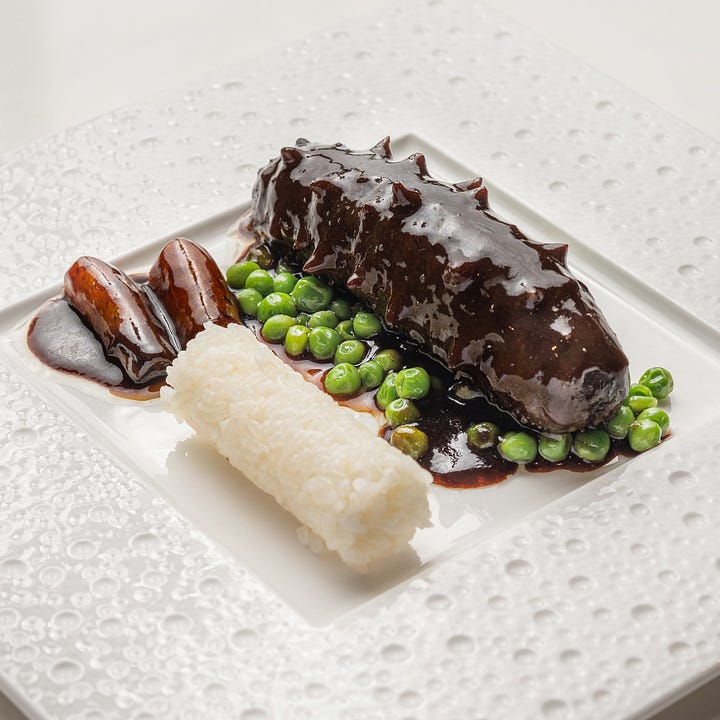


I mean, yeah, maybe. Guess I gotta go back. By the way, the bill for those five dishes wasn’t too bad: $170, and that fed three people. Although I wasn’t that knocked out by the food, the service was excellent. We left a hefty tip.
Related
There are numerous eating guides to the SGV. Here’s one from Saveur, Food & Wine, VICE, Serious Eats, Sunset magazine, and two from Eater one of which is just dim sum. Jonathan Gold wrote this guide in 2013. Here’s a Chinese guide that says, “I heard that in San Gabriel, you can eat the whole of China.”
The Panda Express Innovation Kitchen occupies the former site of the Pasadena Fuddrucker’s, a restaurant that I mentioned back here.
Catty corner was Clark’s Drugs where I got many Transformers, G.I. Joes, and MAD Magazines while a couple doors down was the K-Mart where we got our Nintendo. Down Las Tunas was Kenrich, the baseball card shop where we used to ride our bikes to all the time…
I’m kidding.





